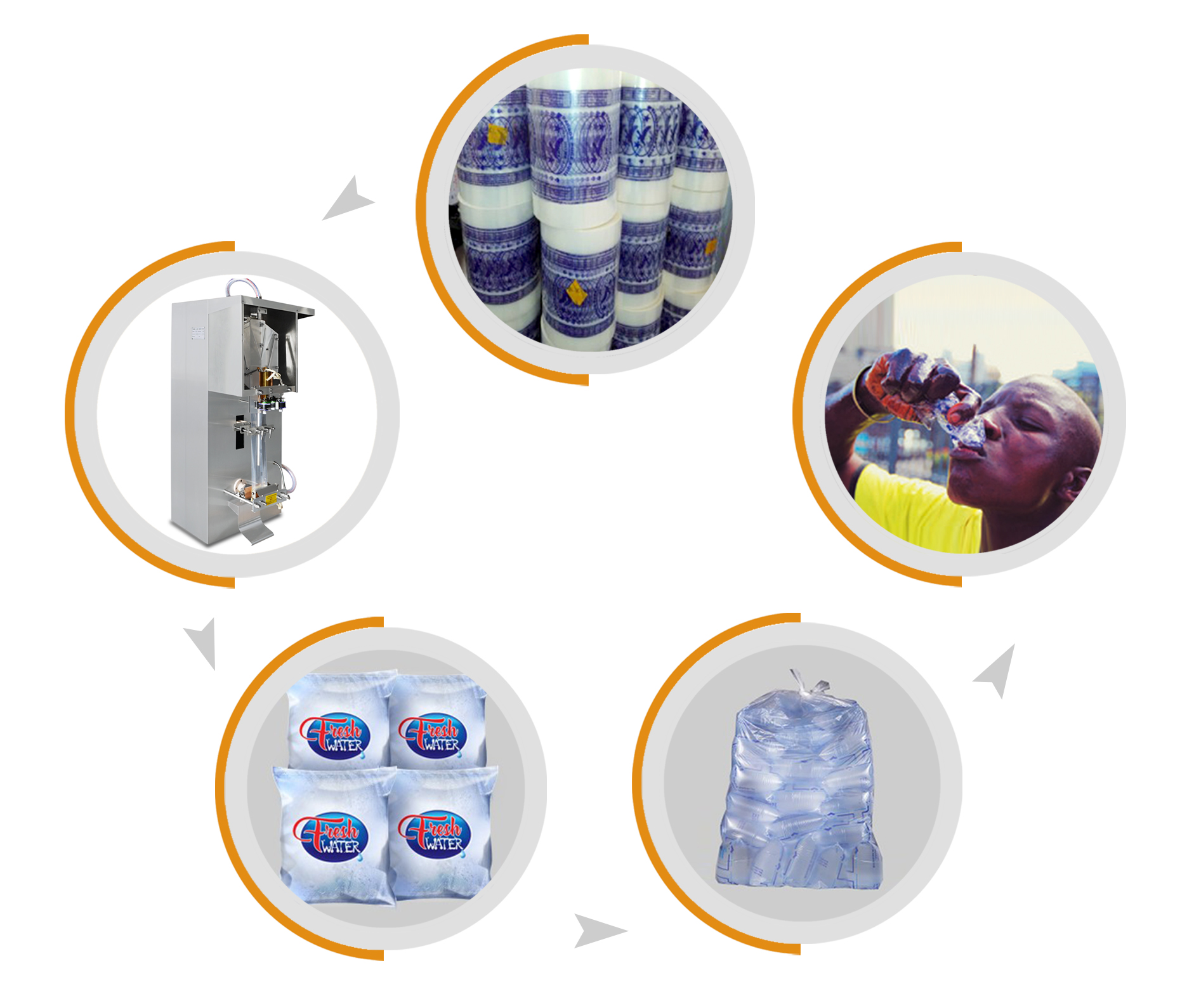Because the physical and chemical properties of liquid materials are different, there are different filling requirements during filling. The liquid material is filled into the packaging container by the liquid storage device (usually referred to as the liquid storage tank), and the following methods are often used.
1) Normal pressure filling
Normal pressure filling is to directly rely on the self weight of the liquid filled material to flow into the packaging container under atmospheric pressure. The machine that fills liquid products into packaging containers under atmospheric pressure is called atmospheric filling machine. The process of atmospheric pressure filling is as follows:
① Liquid inlet and exhaust, that is, the liquid material enters the container and the air in the container is discharged at the same time;
② Stop liquid feeding, that is, when the liquid material in the container meets the quantitative requirements, the liquid feeding will stop automatically;
③ Drain the residual liquid, i.e. drain the residual liquid in the exhaust pipe, which is necessary for those structures that exhaust to the upper air chamber of the reservoir. Atmospheric pressure is mainly used for filling low viscosity and non gas liquid materials, such as milk, Baijiu, soy sauce, potion and so on.
2) Isobaric filling
Isobaric filling uses the compressed air in the upper air chamber of the liquid storage tank to inflate the packaging container so that the two pressures are nearly equal, and then the liquid filled material flows into the container by its own weight. The filling machine using isobaric method is called isobaric filling machine‘
The technological process of isobaric filling is as follows: ① inflation isobaric; ② Liquid inlet and gas return; ③ Stop liquid feeding; ④ Release the pressure, that is, release the residual compressed gas in the bottleneck to the atmosphere to avoid a large number of bubbles caused by sudden pressure reduction in the bottle, which will affect the packaging quality and quantitative accuracy.
Isobaric method is applicable to the filling of aerated beverages, such as beer and soda, so as to reduce the loss of gas (CO ν) contained therein.
3) Vacuum filling
Vacuum filling is carried out under the condition of lower than atmospheric pressure. It has two basic methods: one is differential pressure vacuum type, which makes the interior of the liquid storage tank under normal pressure, and only exhausts the interior of the packaging container to form a certain vacuum. The liquid material flows into the packaging container and completes the filling by relying on the pressure difference between the two containers; the other is gravity vacuum type, which makes the liquid storage tank and the packaging capacity At present, the differential pressure vacuum type is commonly used in China, which has simple structure and reliable operation.
The process of vacuum filling is as follows: ① empty the bottle; ② inlet and exhaust; ③ stop liquid inlet; ④ residual liquid reflux, that is, the residual liquid in the exhaust pipe returns to the liquid storage tank through the vacuum chamber.
Vacuum method is suitable for filling liquid materials with slightly higher viscosity (such as oil, syrup, etc.), liquid materials containing vitamins (such as vegetable juice, fruit juice, etc.) and toxic liquid materials (such as pesticides, etc.) This method can not only improve the filling speed, but also reduce the contact and action between the liquid material and the residual air in the container, so it is conducive to prolong the storage life of some products. In addition, it can limit the escape of toxic gases and liquids, so as to improve the operating conditions. However, it is not suitable for filling wines containing aromatic gases, because it will increase the loss of wine aroma.
4) Pressure filling
Pressure filling is to control the reciprocating motion of the piston with the help of mechanical or pneumatic hydraulic devices, suck the liquid material with high viscosity into the piston cylinder from the storage cylinder, and then forcibly press it into the container to be filled. This method is sometimes used for filling soft drinks such as soft drinks. Because it does not contain colloidal substances, foam formation is easy to disappear, so it can directly pour into unprefilled bottles by relying on its own strength, thus greatly increasing the filling speed. 5) Siphon filling siphon filling is to use the siphon principle to make the liquid material be sucked into the container from the liquid storage tank through the siphon pipe until the two liquid levels are equal. This method is suitable for filling liquid materials with low viscosity and no gas. It has simple structure but low filling speed.
Post time: Sep-18-2021







